MDINA (The Silent City)
Mdina (meaning city) must be one of the most visited places in Malta. We’ve spent a day at this ancient ‘city’ on both our visits (and will probably go back there should we get another opportunity 😉).
From the main road, it’s easy to see the ancient walled city. High on a hilltop, almost in the center of Malta, Mdina is a great place to wander in. There’s so much history cramped together in this small area – you will see a cathedral, churches, museums, palaces and Maltese houses belonging to the aristocracy … all inside the fortified walls.

Historians are of the opinion that this city can go back 4,000 years. Back in Roman times, it was called Melita and was the island’s capital. The present name derived from the Arabic medina or walled city. When the Order of St John took over the island, the knights decided to make the capital at the harbour (which is now known as Valletta).
Today, Mdina is known as the ‘Silent City’ – it’s narrow streets and alleyways are free of motorcars, which are banned to all but the residents.

Once you’re inside the city, there are countless narrow alleys leading to St Paul’s Square (near the Cathedral) and Bastion Square from where there are beautiful views across the Maltese landscape.
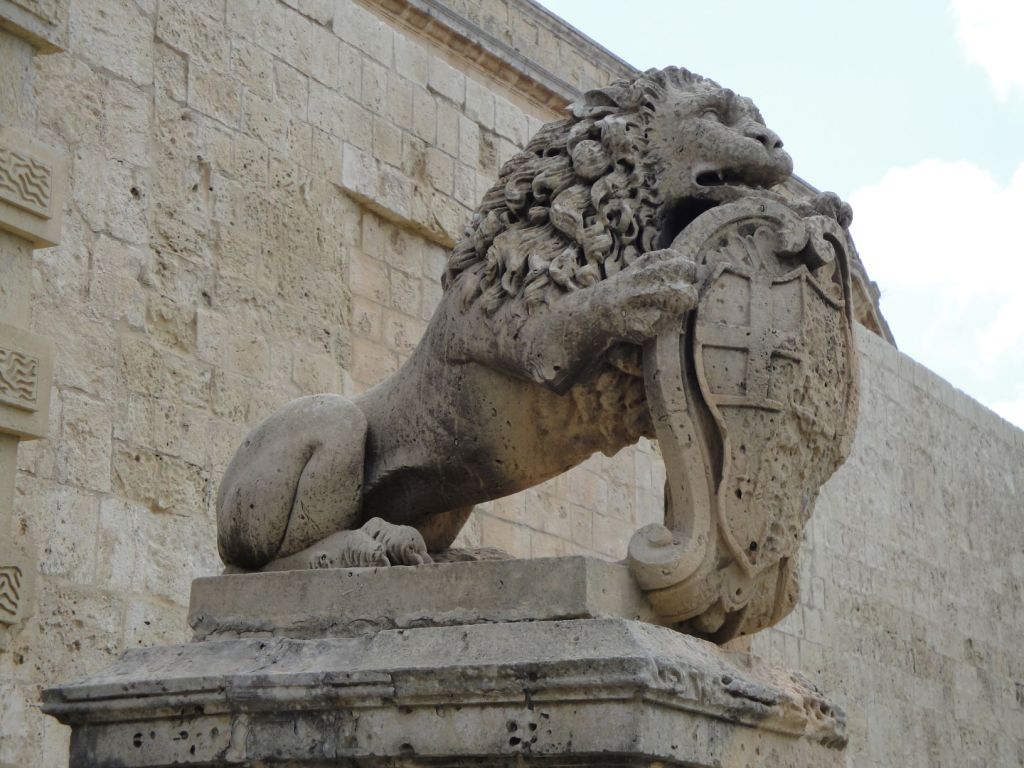
To take a stroll in the Silent City is really special – it’s interesting to read that high walls and narrow streets are so designed not only to protect the inhabitants from attacks, but also the buildings from the strong summer sun.

There are many beautiful buildings and monuments in this small city, including the 18th century Vilhena Palace (which is now the Museum of Natural History), exceptional patrician houses of the 16th and 17th centuries and of course the impressive Cathedral. But we were also fascinated with the smaller details in Mdina … like their stunning doors and door knockers.
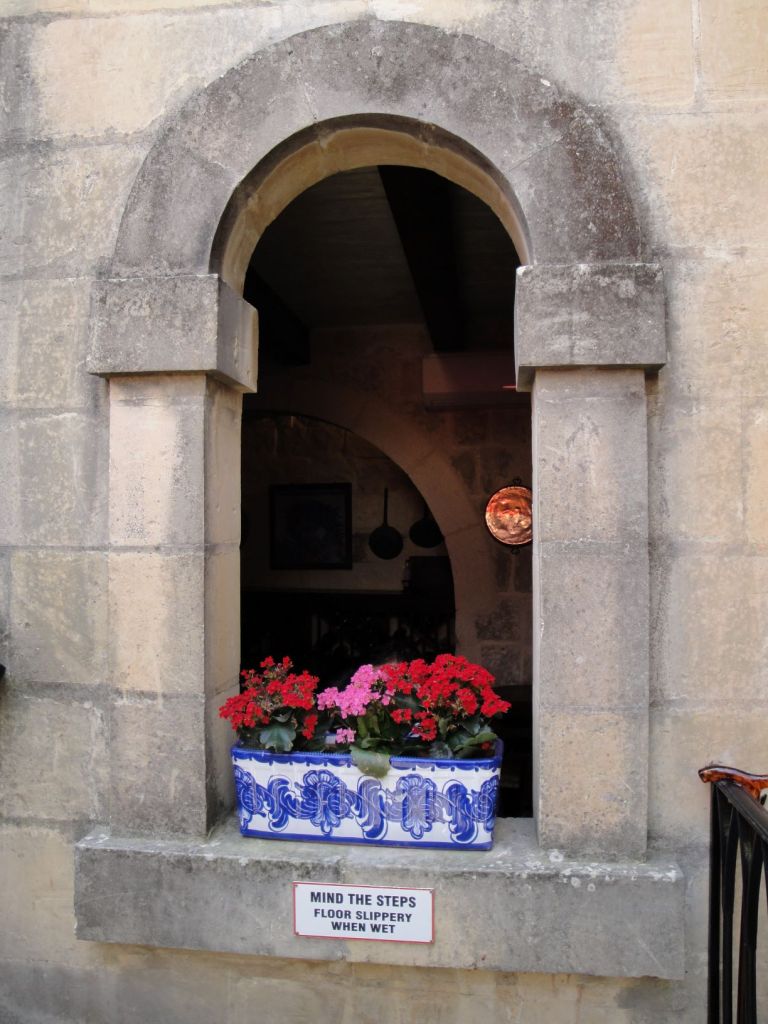

After we’ve taken a stroll through all the streets, it was time to see the view of Malta from the walls. One of the locals we’ve met earlier, informed us the best way of doing this, is to enjoy the view from the famous Fontanella tea garden (and to taste their delicious chocolate cake at the same time). And we were quite impressed … with both the view and the cake!

An impressive site from the walls, is that of the church in Mosta. The Church of St Mary (also called the Mosta Dome or Rotunda) is at 37m across, under the top five largest unsupported domes in Europe. They say a miracle happened here in 1942 … during World War II, a bomb fell through the roof and rolled across the floor during a service, but miraculously failed to explode.

Fontanella tea garden must be one of Malta’s best well-known eateries with a view. As you enter the tea garden, two staircases lead to the upper floor. It’s here where you can have the magical views of the Maltese islands while treating yourself to their delicious chocolate cake.
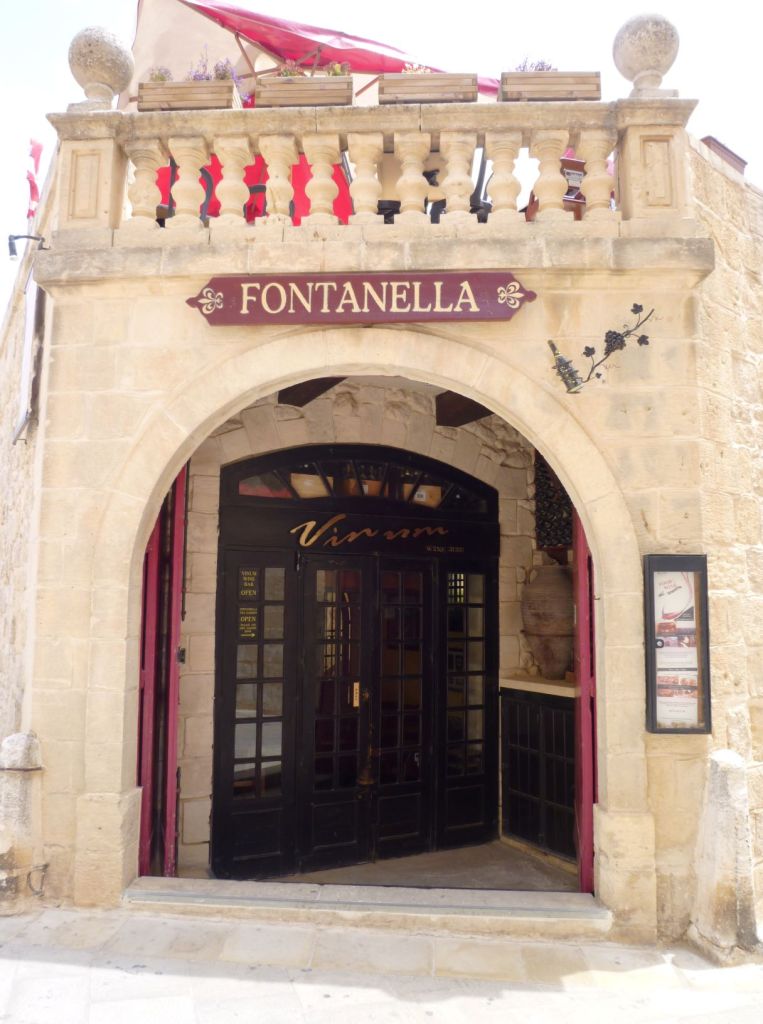
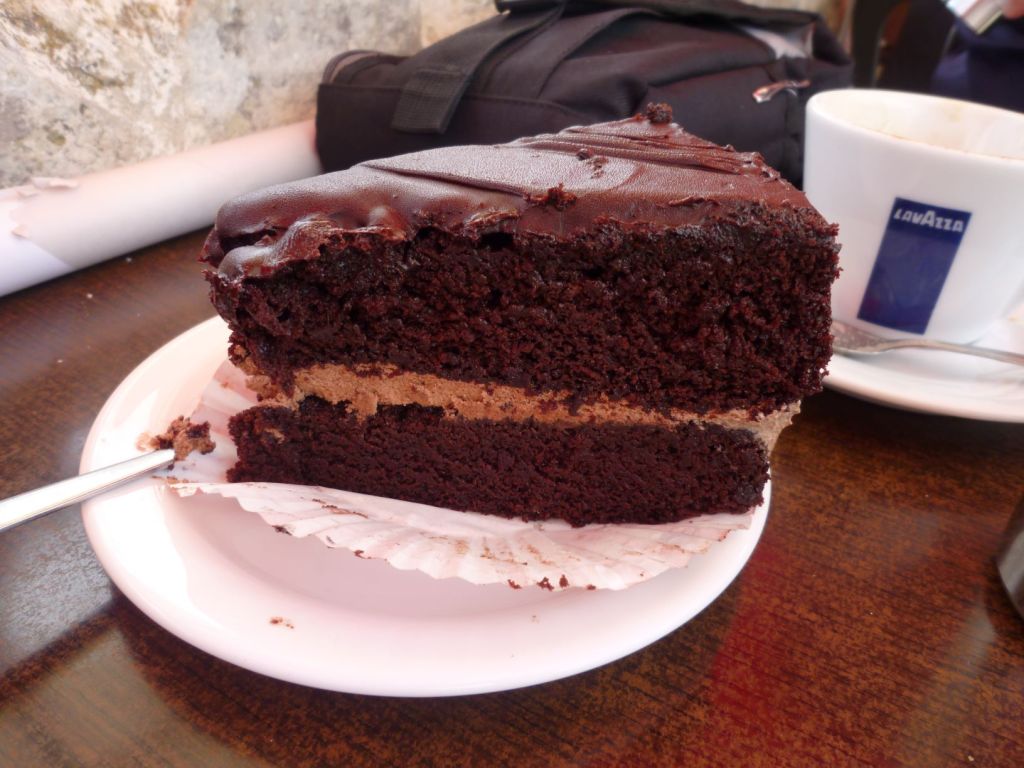
When we’ve entered Mdina through the main entrance, we’ve received a pamphlet about the Mdina Dungeons … that sounded interesting and we’ve decided to visit this ‘offbeat tourist attraction’ (they say it’s for the bold and brave and “not all will leave, ye who enter here”) …
The Mdina Dungeons:
It’s a series of secret underground passageways, chambers and cells that recreate the dark side of Maltese history. From Roman times to the Arabs, the Knights and even Napoleon, you will find characters from the ancient past portrayed in amazing realism, revealing stories sometimes too dramatic to be believed.

These are times when crucifixion, beheading, public executions, torture, crime, punishments and inquisitions were all common under heavy handed rulers.
Be warned: If you have the stomach … take a walk through the Mdina Dungeons (we have chosen the less gruesome photo’s to show to you) …


We’ve came to a scene called ‘Masks of Shame’ … this was quite bizarre.
The note read as follows: “Masks of shame were symbolic referring to particular offences. One such mask with big ears was made for those who heard everything. A big nosed one was intended for those who interfered in other people’s business. Although these masks very rarely caused physical pain, it was a degrading punishment”.

After seeing all these horror scenes, I was glad to be out back in the open sun again … and felt it was definitely time to seek some peace in the nearby Cathedral.
The St Paul’s Cathedral:
This Baroque style cathedral was erected between 1697 and 1702 after the 1693 earthquake had all but destroyed the 13th century original.





The Cathedral Museum is next to the Cathedral and religious art and prints are on display here. There was a long queue here and we’ve decided to call it a day after strolling through Mdina for the entire day in the hot sun … but what an amazing experience!

In our next installment about Malta, we will pay a visit to Rabat to see catacombs and a beautiful Roman villa and museum.
We have done these trips in 2011 & 2013



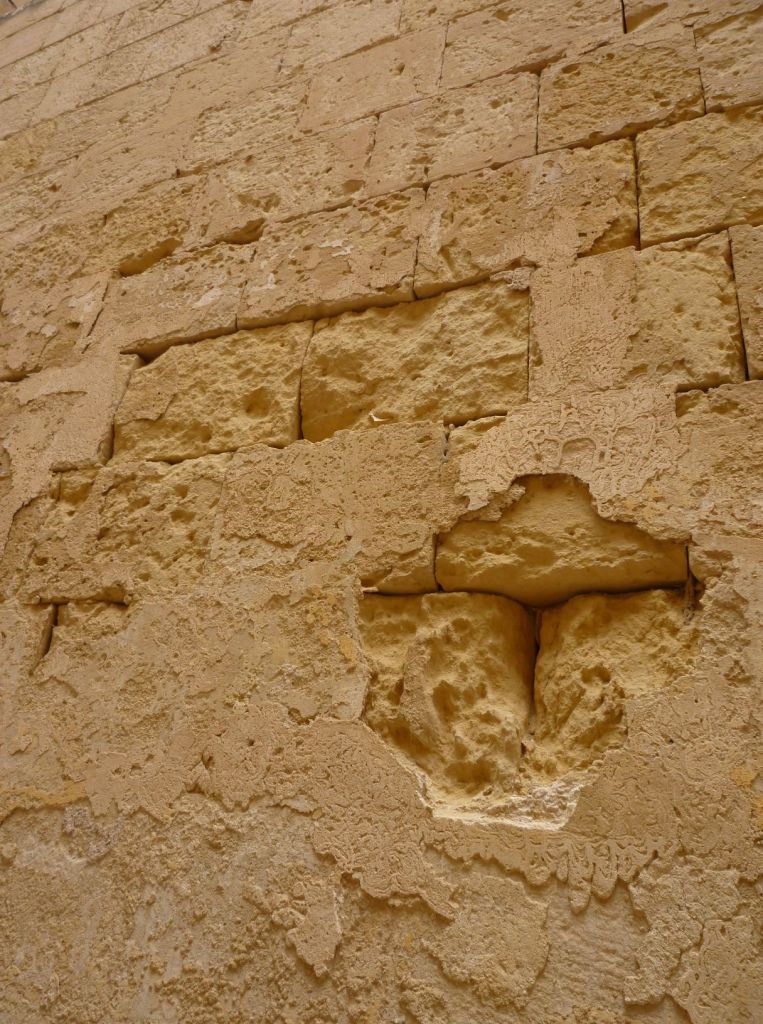






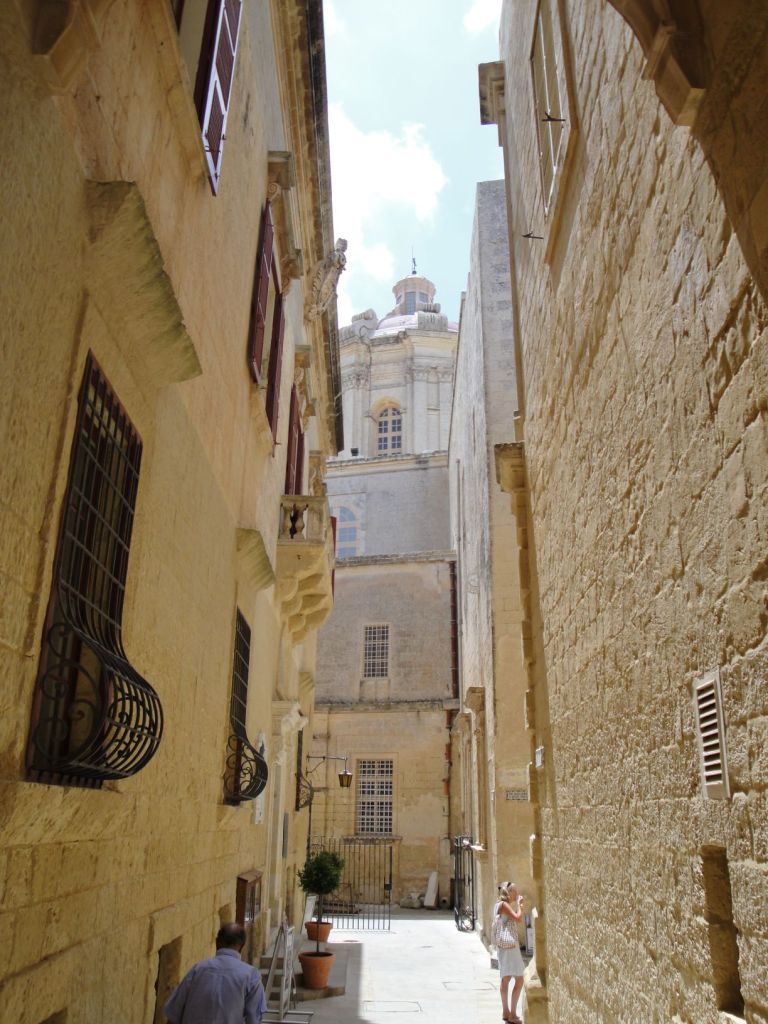
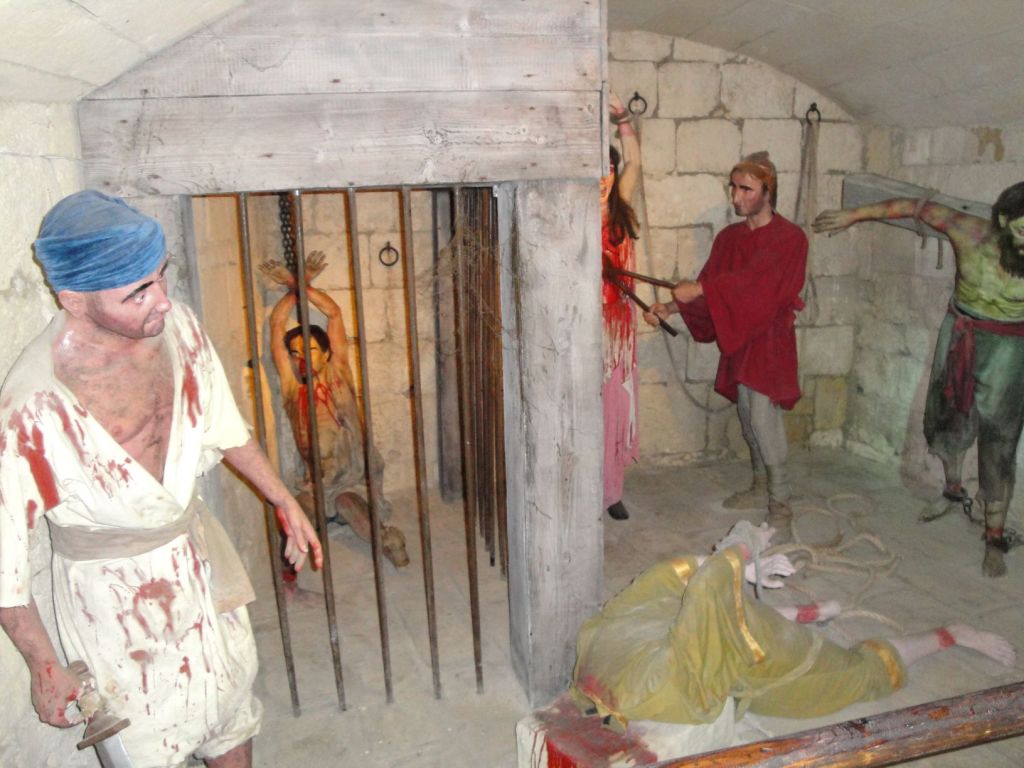
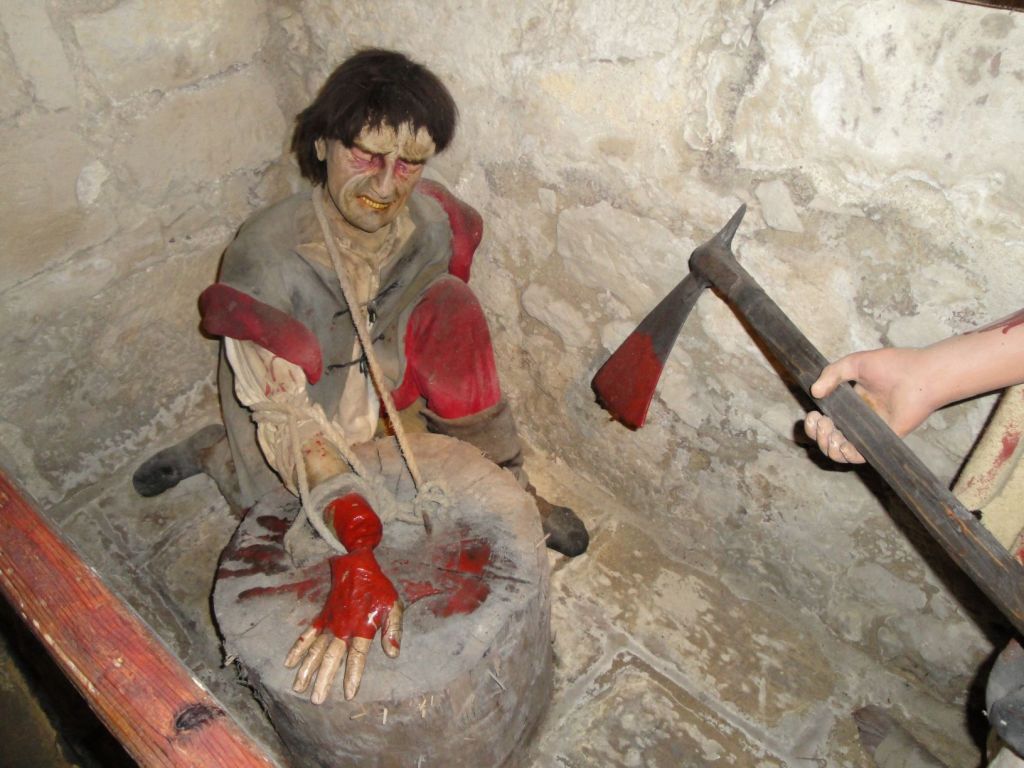
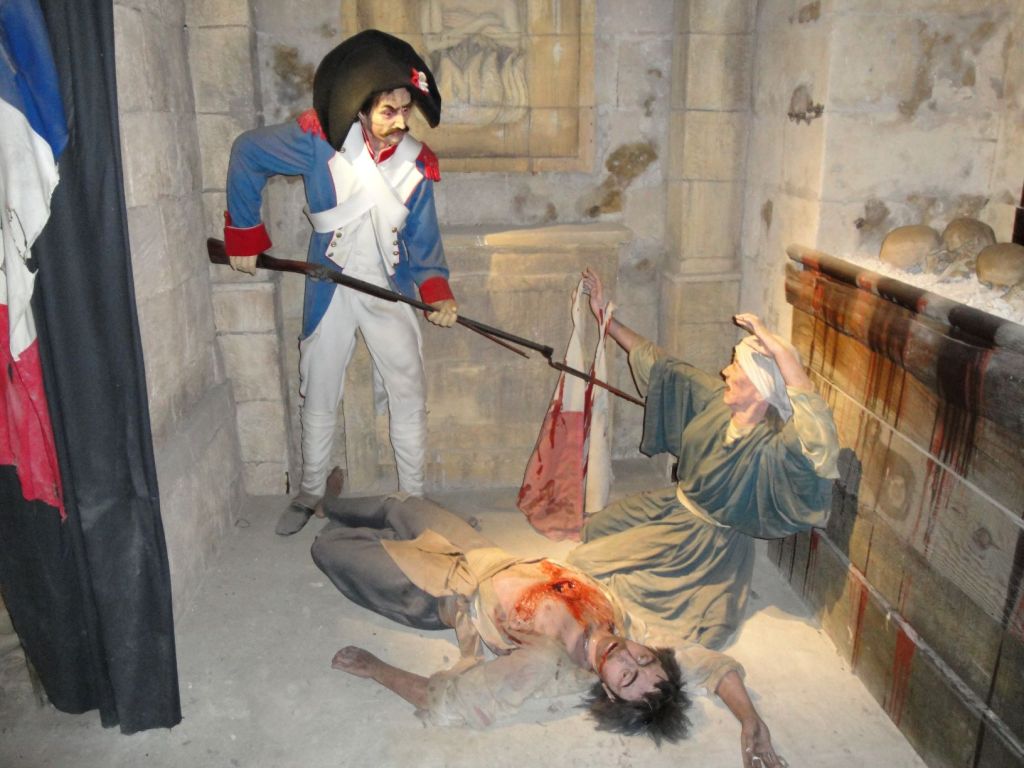
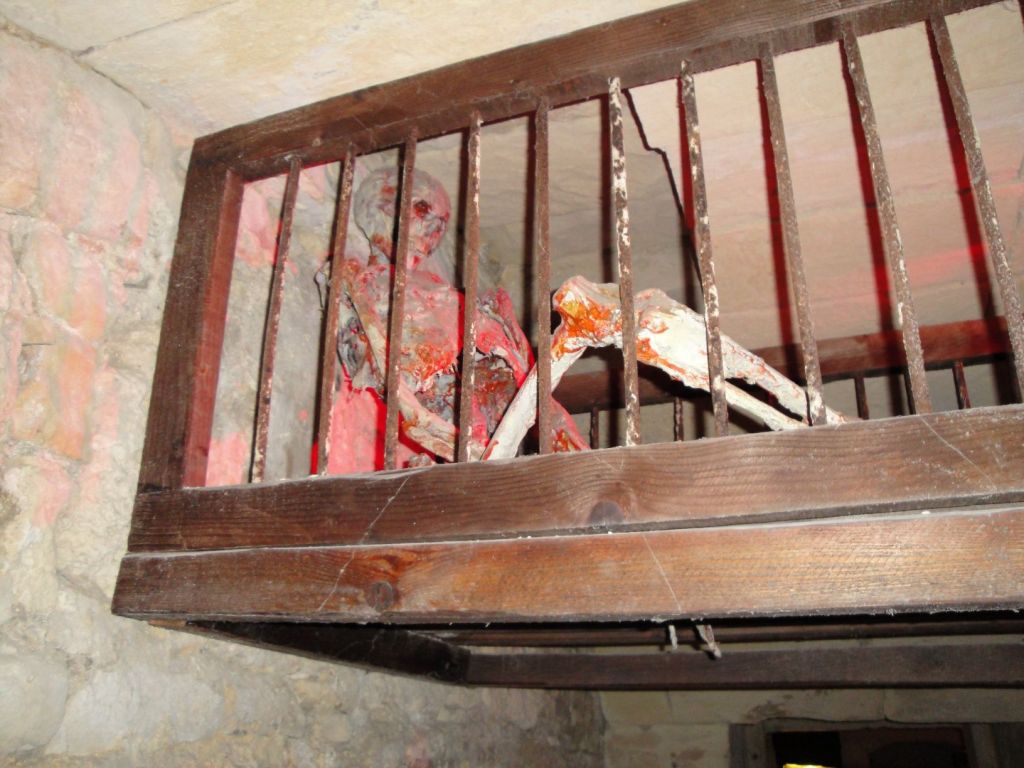
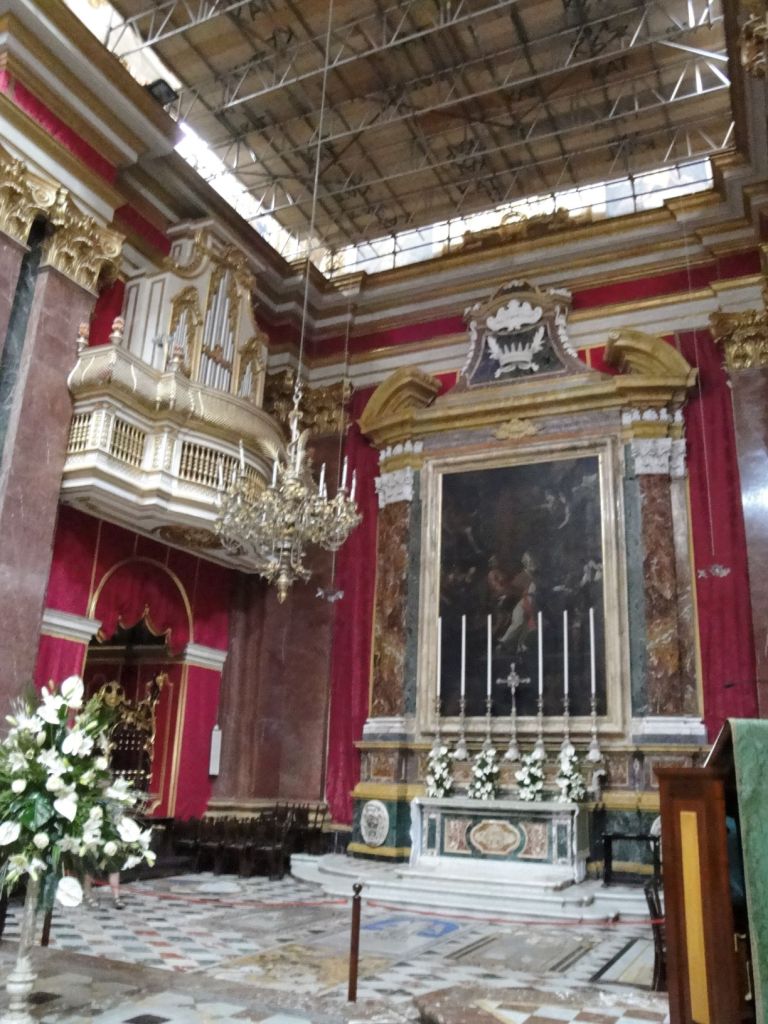

This is a very interesting post about a place I don’t know much about. I love the moniker Silent City and feel that we could all do with more quiet urban spaces. Love the chocolate cake and the cathedral interior. The catacombs exhibition is a good way of learning about The Inquisition. Visitors will certainly not easily forget these scenes, but a hard place to stomach for sure.
LikeLiked by 1 person
Yes, I’m absolutely with you on the quiet urban spaces 👍🏻. Oh dear, just looking at that chocolate cake … I think I should look for a tea garden tomorrow! Hmm, the Mdina Dungeons was not an easy place to visit (I think I would have skipped a visit if I really knew what was waiting inside for me …).
Thanks again for reading about our Malta trip Leighton – much appreciated.
LikeLiked by 1 person
Interesting!
Cathedral is beautiful.
LikeLiked by 1 person
Thanks Angela, yes the Cathedral is indeed beautiful (photo’s never do it justice 😊).
LikeLiked by 1 person
An excellent review of your visit to Mdina Corna. I like the way you have highlighted small items such as door knockers. We didn’t get to visit the Dungeons so it was good to read about them in your post. Marion
LikeLiked by 1 person
Ah, thank you so much Marion. We were indeed fascinated with all the detail in Mdina (and those door knockers were really pretty 😊). Hmm, the Dungeons … was gruesome to see, but at the same time interesting (but I think one visit was enough). Thank you, as always, for reading – have a great week. Corna
LikeLiked by 1 person
I’d love to visit this city. Love the narrow old streets, without traffic and the great door knockers! The museum is unusual and a little graphic, but I guess they get the point across. Looking forward to the next one. Maggie
LikeLiked by 1 person
Thanks Maggie, we’ve really enjoyed our visit to Mdina (and was great to walk around in the streets without looking out for a car 😉). Yes, the Dungeons is definitely a very graphic museum – it’s hard to imagine that people could be so cruel. Thank you once again for your comments – have a great week. Corna
LikeLiked by 1 person
Interesting looking place, looks very much more like North Africa than Malta. Looks like a great place to wile away a few hours.
LikeLiked by 1 person
Your comment make absolutely sense if you think that Libya and Tunisia in North Africa is only about 300km across the ocean – so, they are not that far apart 😉. It was a great day to explore and we have great memories of our time there! Thanks for reading – much appreciated.
LikeLiked by 1 person
Super pair of knockers! I really must get to Malta one day!
LikeLiked by 1 person
Absolutely 😁! We’ve seen so many interesting door knockers throughout Malta … we should have bought a couple of these to bring back home!
LikeLiked by 1 person
Loved Mdina – oh how I wish I was back there right now!
LikeLiked by 1 person
Me too Hannah, me too … 💌
LikeLike
Mdina looks beautiful – I can’t wait to visit, hopefully in 2023 when we plan to have our annual Virtual Tourist meeting in Malta! The tea rooms will definitely be in my list but I’m less sure about the dungeon – we have something similar in London, the London Dungeon, and it’s very expensive and a bit tacky. Maybe this one is less so but nevertheless I think I’d rather be out in the fresh air exploring the lanes and photographing all those beautiful details!
LikeLiked by 1 person
Oh, that’s a wonderful prospect Sarah! You will definitely have lots to do while you’re there … and yes, you must ensure not to miss out on the Fontanella tea garden (remember the chocolate cake)! Hmm, I think I had enough of dungeons after seeing this one … I’m with you on exploring in fresh air!
LikeLiked by 1 person
My father was in Malta during the siege in WW2. On his way there, the ship he was on was torpedoed. But other than that, he really never spoke about it. He had to be evacuated due to illness and came home via South Africa which he did talk about. He liked it a lot.
LikeLiked by 1 person
Wow, that is quite astonishing 😲. I wonder what his thoughts would have been of Malta (then) and South Africa … it must have been so much different than now – I would have loved to hear his stories.
LikeLike
Oh my that church is SO beautiful!!!!
LikeLiked by 1 person
Indeed Diane! I always feel that photo’s don’t do justice to such a beautiful place … to see this in person, is just something special.
LikeLiked by 1 person
I love, love, all of this! Mdina definitely reminds me of Dubrovnik. And that cathedral is so beautiful… I’m always amazed by the frescoes in the dome…it must be incredibly hard work to paint those back in the day! Thank you for sharing this amazing piece of Malta 🙂
LikeLiked by 1 person
Then I would love Dubrovnik 😊! Yes, the cathedrals in Malta is really spectacular (I will soon show another one on Gozo, the sister island of Malta, which is equally beautiful). You’re right about the hard work … that’s probably why it took them years to finish it. Thanks for reading and have a great day.
LikeLiked by 1 person
The gruesome and the gorgeous all in one city!? Something for everyone!! 🙂
LikeLiked by 1 person
Indeed Mel … but I think I’ll skip the gruesome next time 😉.
LikeLike
This looks like an incredible place to explore. I find it neat how the city was designed to protect people from attacks and the summer sun! That’s so genius. That slice of chocolate cake looks divine! Mmm.
LikeLiked by 1 person
Indeed, we enjoyed our time in Mdina! Hmm, I think somewhere on one’s holiday, you need to have a slice of chocolate cake 😊. Thanks for reading and your lovely comments.
LikeLiked by 1 person
I love all the details you show in your photos! And st Paul’s cathedral must have been amazing! I definitely want to visit Malta the next time I go to visit my family.
LikeLiked by 1 person
Ah, that’s nice of you to say that – thanks Morag 💌. Oh yes, the cathedrals on Malta are truly spectacular. I will show another cathedral on the sister island Gozo in one of my next posts … you will not regret visiting Malta!
LikeLiked by 1 person
I look forward to it 👍
LikeLiked by 1 person
We were there 3 years ago..an incredible site to see. So historic and beautiful structures. The dungeons were gruesome but only took a quick visit there.
LikeLiked by 1 person
Yes Anita, we were also impressed with all those beautiful structures … quite amazing! I think the dungeons were our quickest visit on Malta 😉.
Thank you so much for reading and your comments – much appreciated.
LikeLike
Wow, that chocolate cake looks amazing – so moist!
I’m loving your Malta series. Wanted to visit and so close living in Calabria, but never got here in 4 years – too much to see in Italy. The church in Mosta looks impressive and grand, even from a distant.
LikeLiked by 1 person
Oh, don’t mention that chocolate cake again … I can eat a slice right now!! The Mosta dome was indeed impressive (we’ve been inside … but alas, for some reason I can’t find the photo’s 😟). I fully understand that there’s just wayyy too much to see in Italy – not even 4 years would be enough for me!
Thanks for reading, as always … we’ll see you in Rabat next!
LikeLiked by 1 person
Look forward to meeting you in Rabat! 😉
LikeLiked by 1 person
I’ve just posted Rabat on our blog – thinking back, it was one of our best days in Malta, visiting a beautifully restored Roman Villa.
LikeLiked by 1 person
The Dungeon is both creepy and interesting.
LikeLiked by 1 person
It’s exactly like you’ve said there 😁.
LikeLiked by 1 person
Fascinating history and beautiful buildings and scenery! Thank you for such a stunning share 💕🌸
LikeLiked by 1 person
Oh Henrietta, Mdina was such a wonderful city to explore – those narrow streets (and no speeding cars in sight) were a real delight to see! Thank you for reading … and for still following our Malta series 💌.
LikeLiked by 1 person
One of my favourite places in Malta. I first went in 1994 when it was still a bit shabby. They have spruced it up now.
LikeLiked by 1 person
Yes, I’m sure it was way different in 1994 😉 … but must have been still a great place to visit! Thanks for visiting (and following) our blog!
LikeLike
I look forward to reading your posts.
LikeLiked by 1 person
It is fascinating reading about Malta and this ancient city looks amazing. Trying to get a car through those narrow alleys reminds me of our excursions to some of southern Spain’s hilltop White Towns…a few hairy moments. The dungeons look gruesome but I’d absolutely want to see them.
LikeLiked by 1 person
Mdina was such a delight to visit … and yes, I saw how some of the residents drove their cars in those alleys – it’s tricky to say the least! I was also amazed at how the buses in Malta got around in the narrow streets of the island 😳.
Oh yes, on our walking journey (Camino) through Spain we saw so many narrow streets – at first I thought it was only for pedestrians, but then saw cars coming towards me … here in South Africa we are used to wide open roads.
LikeLiked by 1 person
Another brilliant piece, I think Mdina / Rabat (which are basically the same place as you know) was / were my favourite places in a country where I liked just about everything. I liked it so much I went back again (the Maltese bus pass is a great thing)! Have a look here
Or here.
There is certainly so much to see and as you might notice, the moat around Mdina is a lot better looking when you visited than when I did. When I was there, it was a building site!
I m looking forward to more.
LikeLiked by 1 person
I’ve clicked on your link … but when I’ve started to read, I’ve immediately recognise your post and then remember that I did read all your Malta posts. I’ve loved your Malta posts so much and that’s when I’ve decided to search for our Malta trip photo’s and write about our amazing holidays there. So, I must thank you that I could relive our Malta holidays!
LikeLiked by 1 person
No thanks necessary at all and thank you so much for your kind comments on my writing.
As you well know it is easy to write about a place like Malta because there is just so much to write about. You cannot turn a corner but there is something new and wondrous to write about.
You know about my writing style by now (if it can even be called a style), I just go through my images, do a little research and the memories come flooding back. I could never write a novel as I just cannot make things up but I find it easy enough to write honestly about what I saw and heard and smelt and, most importantly, felt at any given time in any given place. There is no trick there, anyone can do it, you do it so beautifully.
I am so glad I could inspire you to write the 15 wonderful posts that you did about Malta and Gozo, they were a superb read as always. It is always interesting to compare your own views of a place with those of others to put things in perspective a little.
LikeLiked by 1 person
There’s so much truth in your comment here Fergy … I love to see what other people thought about a place we’ve also visited … sometimes it’s hard to belief they have not enjoyed a place as much as we did! But that’s how life is – we’re all different (and thank goodness for that)!
And yes, it’s easy to write about your own experiences … that’s probably why it was so difficult to write our post # 15 about Malta, because I wasn’t the one who dived and had to rely very much on Berto’s stories and feelings!
LikeLiked by 1 person